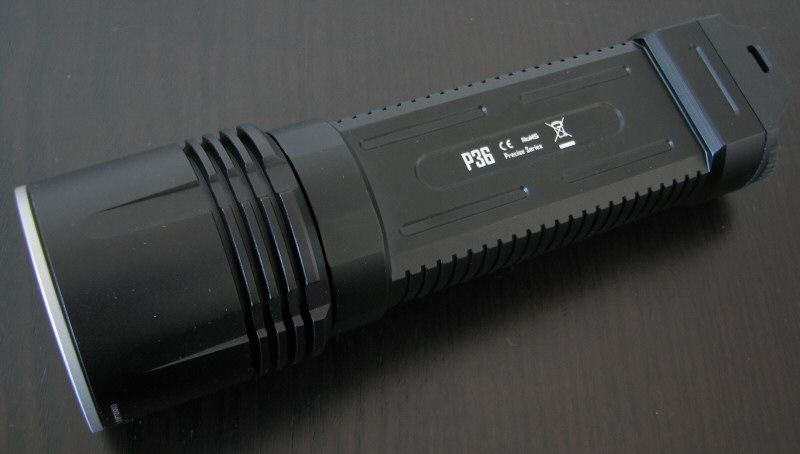
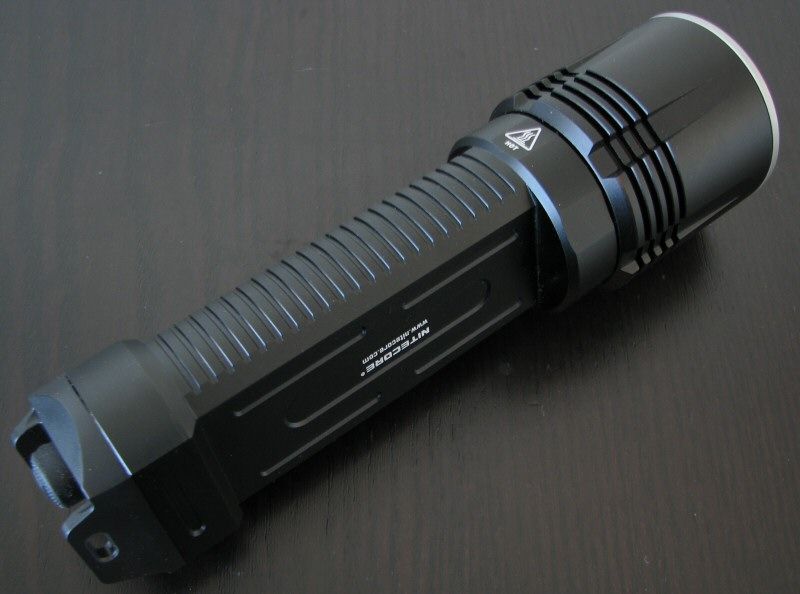
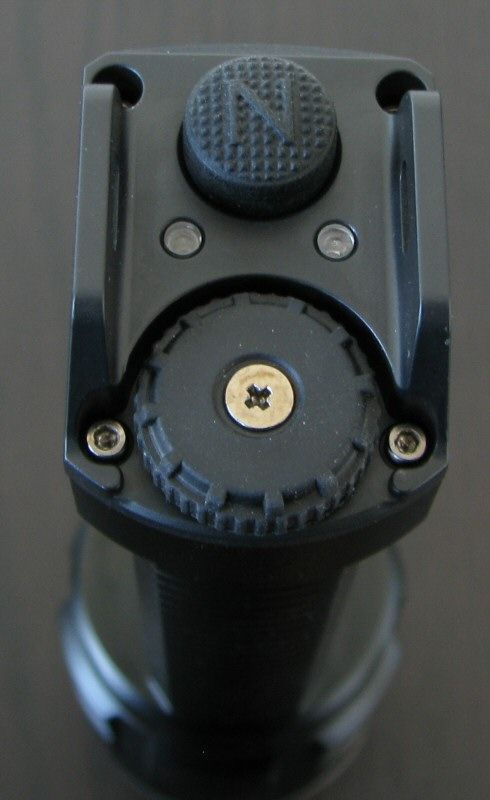
Nitecore has released a 2x18650 MT-G2 light, the P36. Although superficially similar to the Fenix TK35UE in appearance, the P36 features an innovative rotary output control dial.
Let's see how it measures up …
Manufacturer Reported Specifications:
(note: as always, these are simply what the manufacturer provides – scroll down to see my actual testing results).
- LED: CREE MT-G2 LED
- Uses 2 x 18650 or 4 x CR123A (Not Included), can Also Use 4 x RCR123A
- Output / Runtime: Turbo: 2000 Lumens / 45 Minutes - High: 1500 Lumens / 1 Hours - Medium: 380 Lumens / 7.5 Hours - Low: 2 Lumens / 325 Hours
- Beam Distance: 300 Meters
- Peak Beam Intensity: 22300 cd
- Multi-functional Rotary Switch
- 10 Variable Brightness Levels
- 5 Special Modes Including Strobe & SOS
- Advanced Temperature Regulation Technology
- High Efficiency Constant Current Circuitry
- Intelligent Memory Function
- Two Battery Power Indicators
- Micro-Textured Metal Reflector
- Stainless Steel Bezel Ring
- Toughened Ultra Clear Mineral Glass Lens With Anti-Reflective Coating
- Constructed From Aircraft Grade Aluminum Alloy
- HAIII Military Grade Hard-Anodized
- IPX-8 Waterproof
- Impact Resistant To 1.5 Meters
- Tail Stand Capable
- Dimensions: Length: 6.81 Inches, Head Diameter: 1.97 Inches, Tail: 1.10 x 1.65 Inches
- Weight: 8.89 oz (Without Battery)
- Includes: Battery Carrier, Quality Holster, Lanyard, Rubber Switch Casing, Spare O-Ring
- MSRP: ~$130
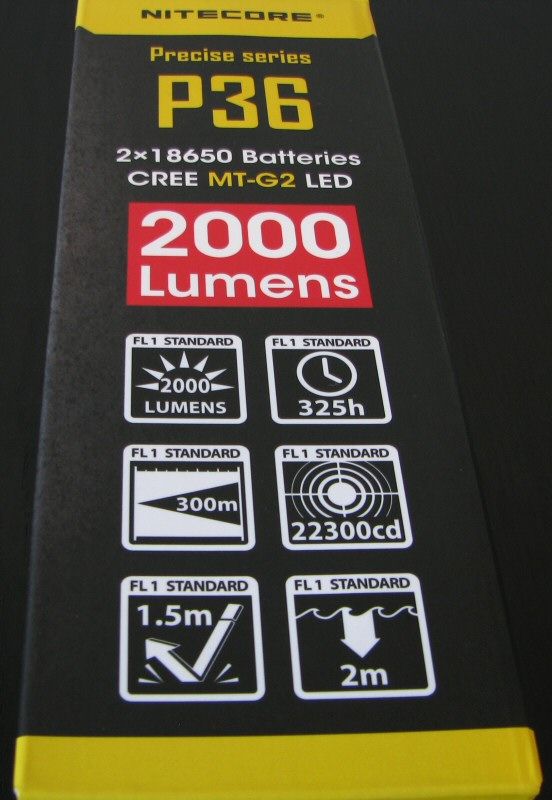
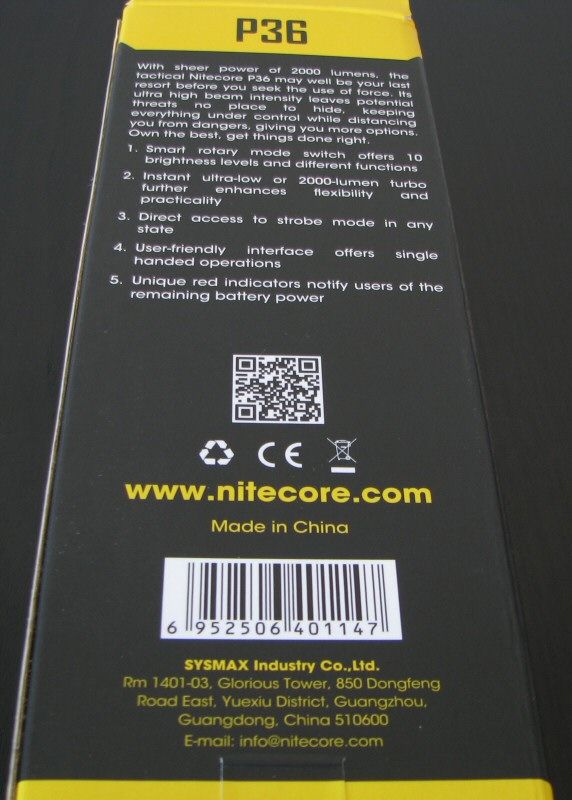
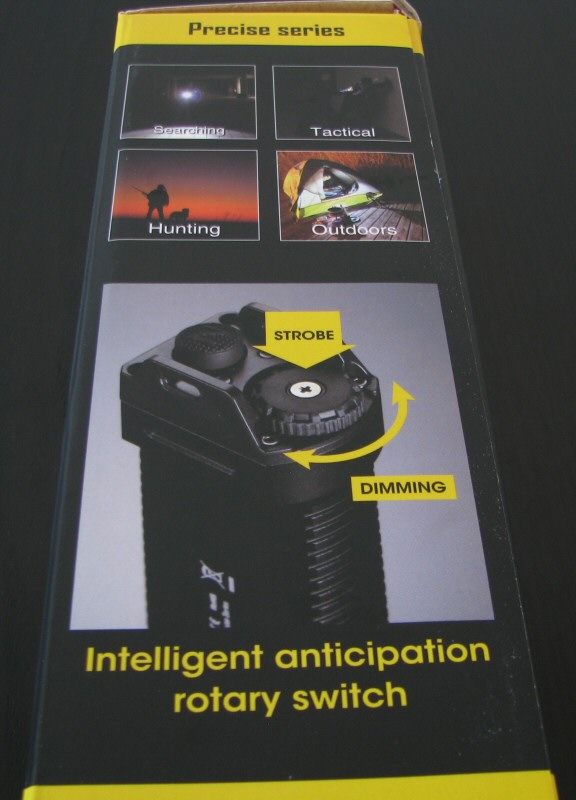
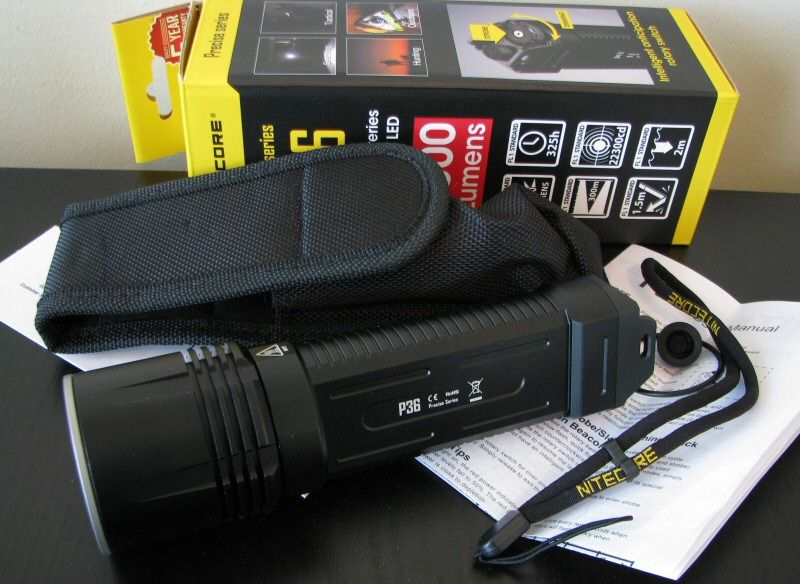
Packaging is the Nitecore's standard colorful cardboard display box. As before, detailed specs and information are printed right on the box. Inside, included with the light are a spare o-ring, spare tailswitch boot cover, wrist lanyard, holster with Velcro closing flap, warranty card, and manual.
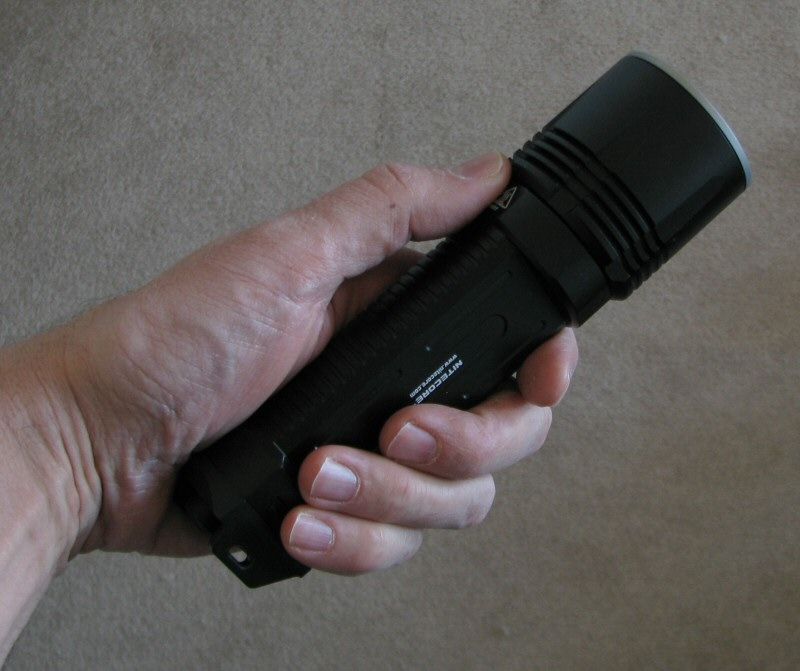
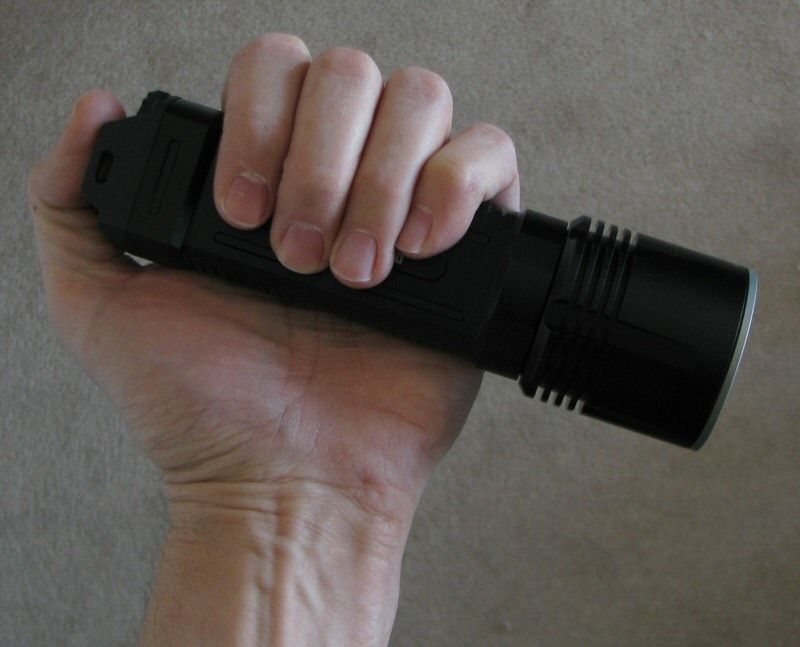
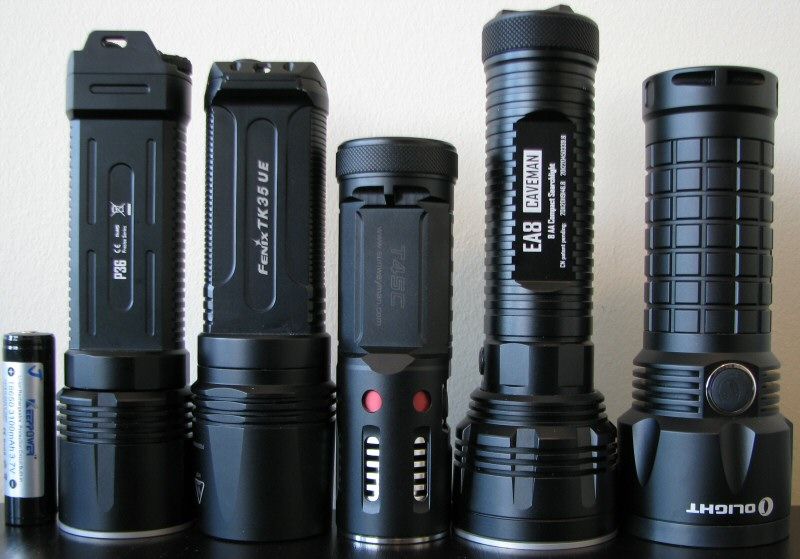
From left to right: Keeppower protected 18650 3100mAh; Nitecore P36; Fenix TK35UE; Sunwayman T45C; Nitecore EA8; Olight SR52.
All dimensions directly measured, and given with no batteries installed:
Nitecore P36: Weight 255.6g, Length 173mm, Width (bezel): 50.0mm
Eagletac SX25L3: Weight: 315.9g, Length: 150.2mm, Weight (bezel): 47.0mm
Fenix TK35UE: Weight 270g, Length 164mm, Width (bezel): 48.6mm
Niwalker BK-FA02: Weight: 687.6g (870g with 4x18650), Length: 209mm, Width (bezel): 80.0mm, Width (tailcap): 50.3mm
MiniMax Nova MM15 Shipping: Weight: 333.7g (without handle), 355.9g (with handle), (539g with 4x18650 and handle), Length: 114.6mm, Weight (bezel): 63.7mm
Sunwayman T45C: Weight: 216.6g, Length: 136.0mm, Width (bezel) 40.4mm, Width (widest part): 40.8mm
Thrunite TN35 (MT-G2): Weight: 571.4g (723g with 3x18650), Length: 201mm, Width (bezel): 78.9mm
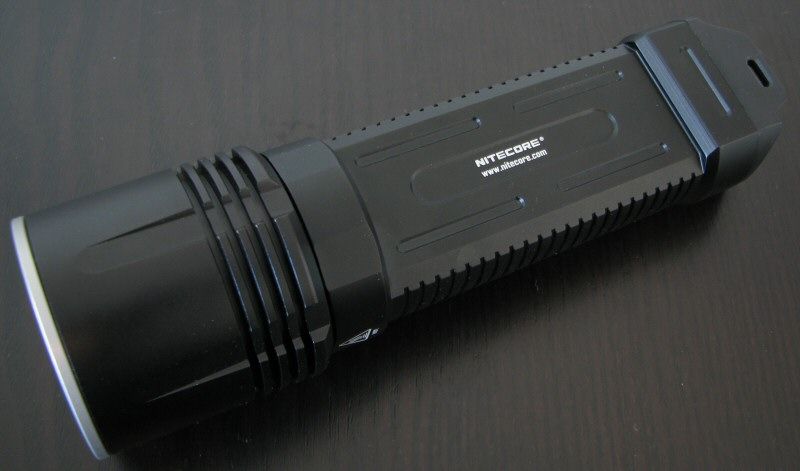

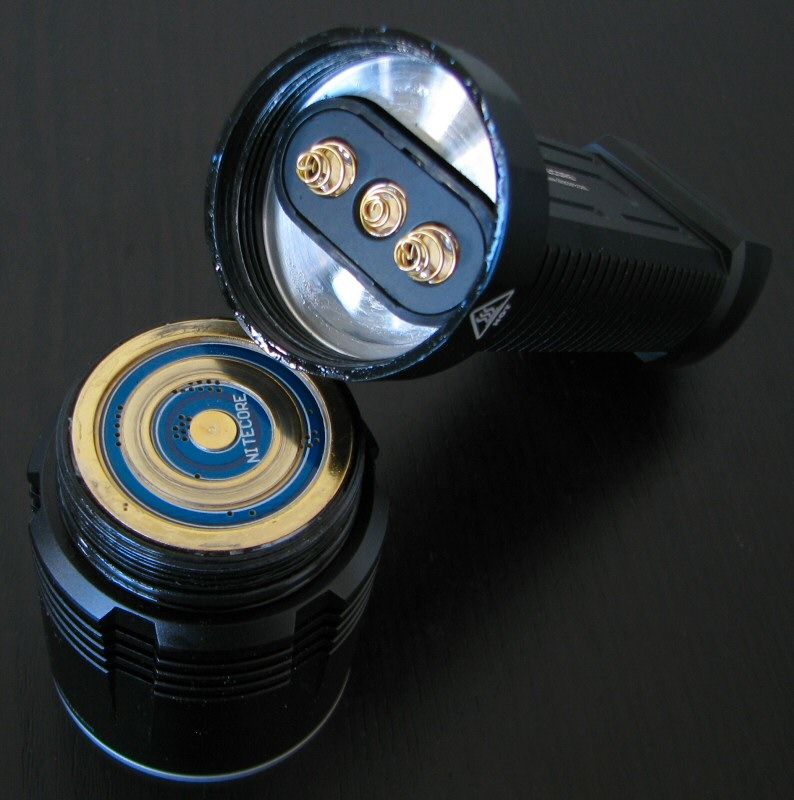
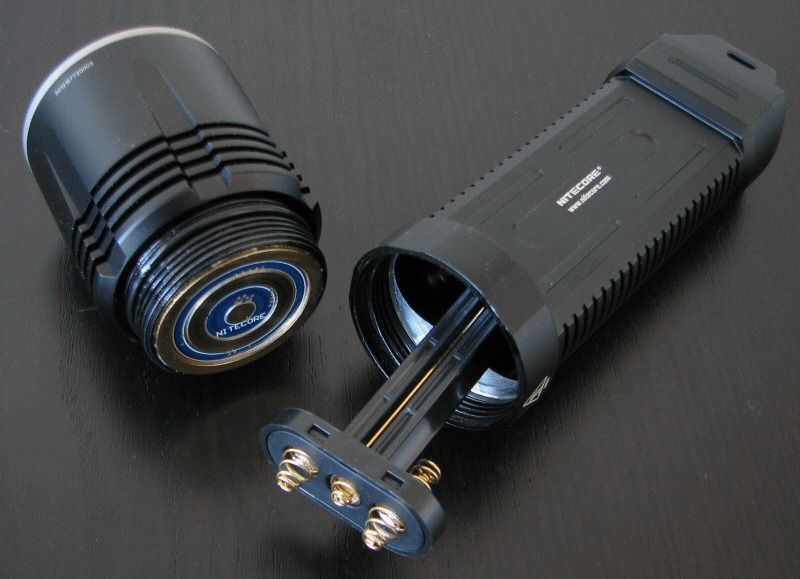
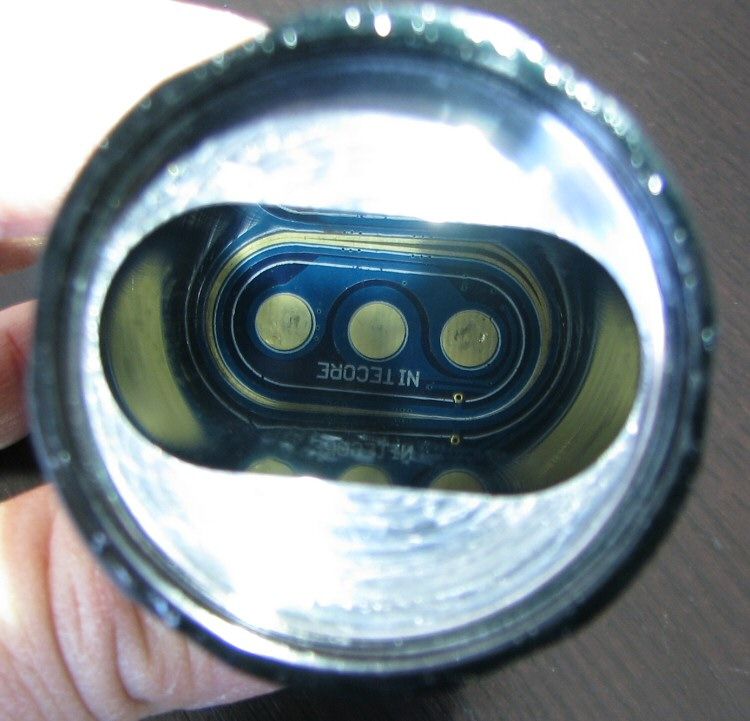
The overall body design of the P36 is generally similar to the Fenix TK35UE. The light uses a side-by-side 2x18650 arrangement, with a battery carrier. Like the TK35UE, the P36 is streamlined, and quite comfortable to hold and handle (although it is a bit longer than the TK35UE).
Anodizing is a matte black (hard anodized), and with no obvious blemishes on my sample. Lettering is clear, bright white against the dark background. Labels are fairly small.
The light lacks knurling as such, but the ridge detail along both sides of the battery handle (and head fins) provide reasonable grip.
Screw threads are square-cut and anodized, but connection is controlled by the tension on the battery carrier springs. On my sample, you need to turn the head at least one full revolution loose (from tight) to lock it out.
The tailcap area is distinctive, as a feature both a physical clicky off/on switch and an electronic mode-changing rotary dial/switch. Switch feel is good, if a bit on the firm side. I will describe the user interface and function below. The light can tailstand, thanks to the raised side ridges.
Let's take a look at the carrier:
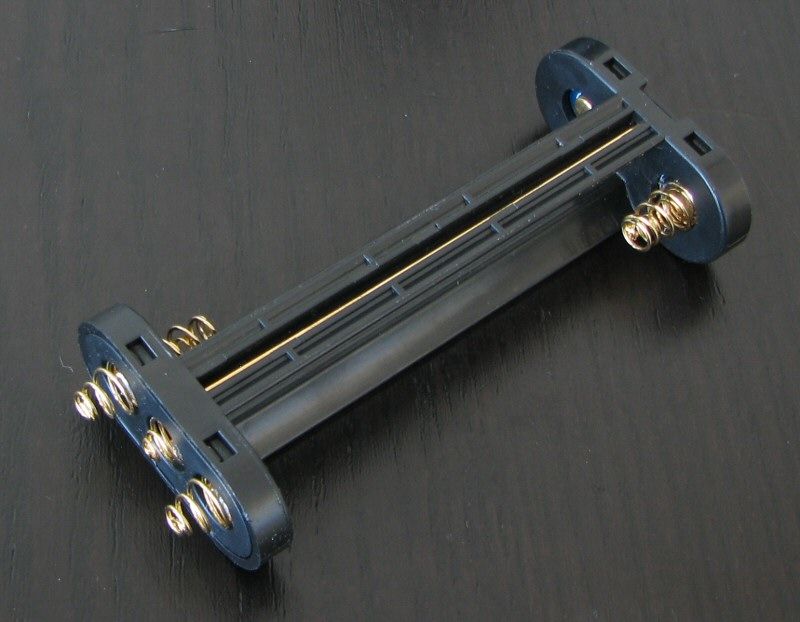
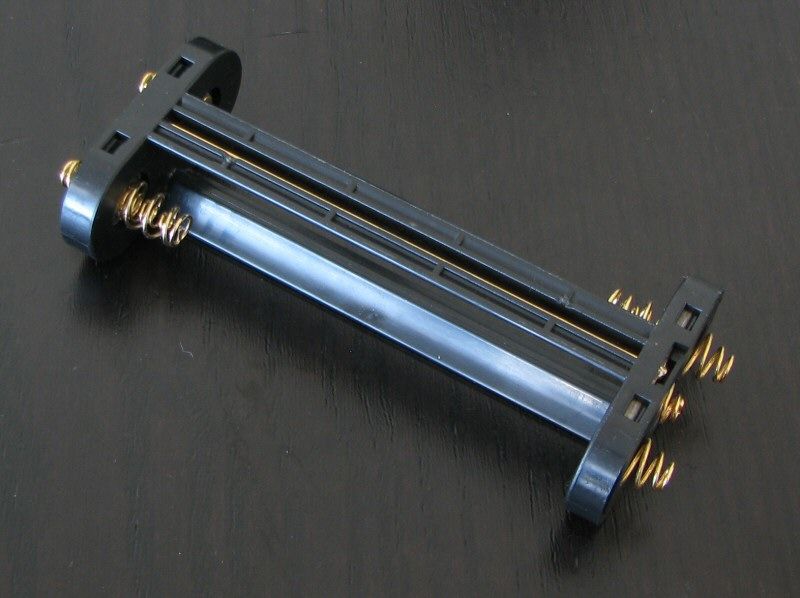
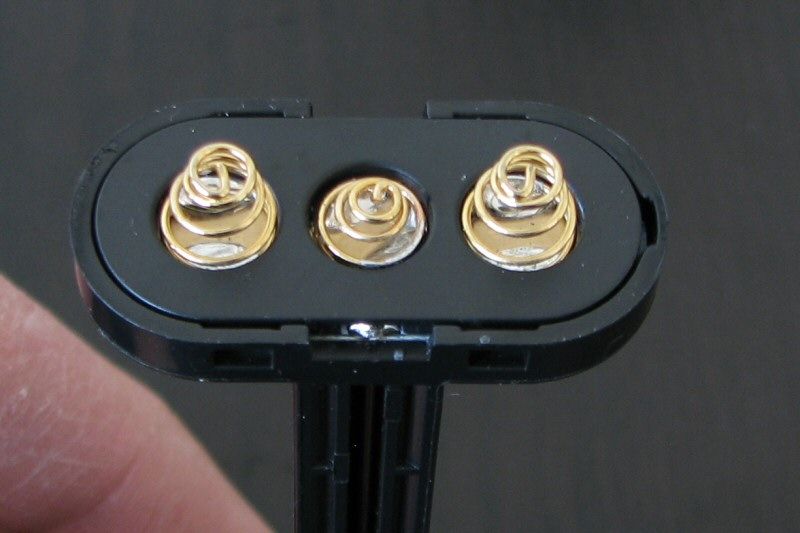
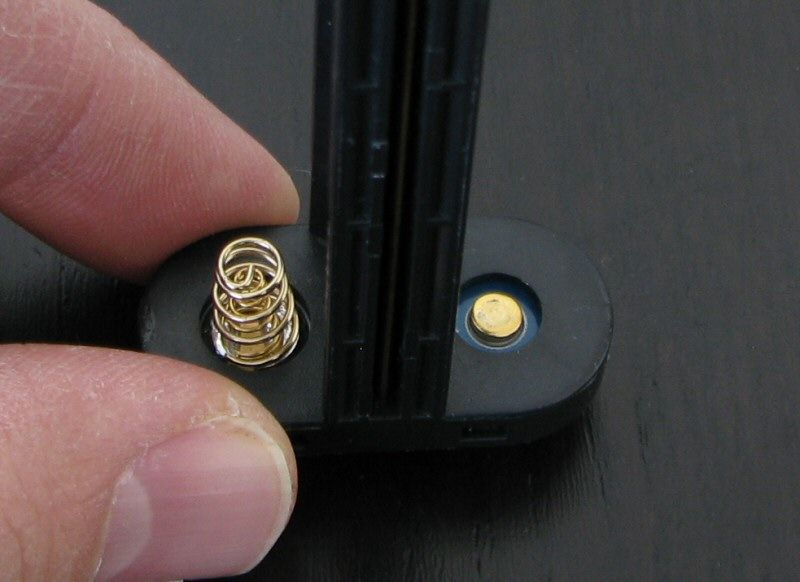
The carrier is bi-directional, fitting and working in the light in either orientation. It is made entirely of plastic. The carrier chambers hold all my protected 18650 cells very snugly, so you may have issues with some of the longest high-capacity ones. There is a recessed button at the positive terminal in each chamber, so flat-top cells work not work in this light (i.e., need to use small button top only).
Note that there was a strong acrid smell coming off the inside of the light. :green: I suspect this is due to outgassing of plasticizers in the carrier (which then get trapped inside the air-tight sealed battery compartment). While harmless, this may be offensive to you – if so, I recommend you air the light and carrier out in a well ventilated area when not in use.
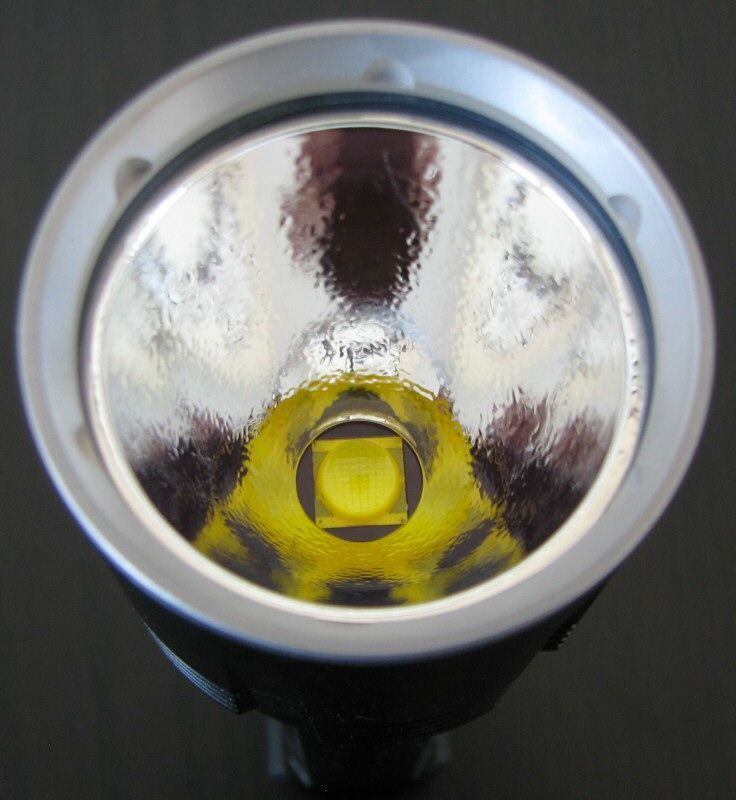
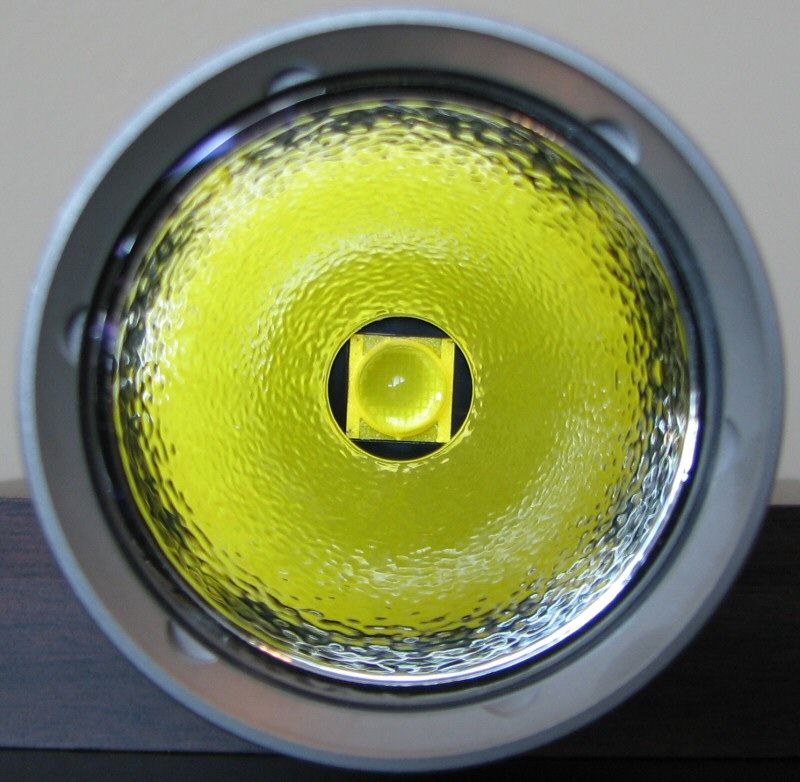
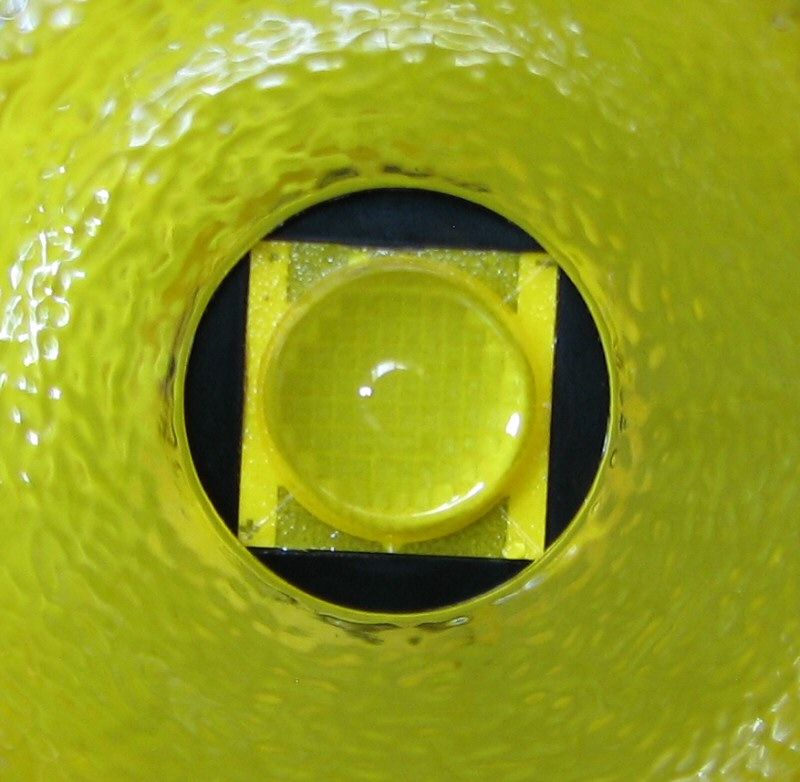
The Cree MT-G2 is a large neutral white emitter, composed of a grid of 72 distinct segments on it (under a large dome). Due to the large die size, don't expect great throw from a MT-G2 light, even with the reasonably deep reflector included here. The reflector is moderately textured, to help smooth out the beam. This should produce a relatively balanced beam, similar to the Eagletac SX25L3. Scroll down for beamshot comparisons.
User Interface
User interface is novel for the P36. Turn on/off by the raised forward clicky switch (press-on for momentary, click for locked on).
Mode changing is controlled by the rotary (dial) switch. Turn the dial counter-clockwise (i.e., to the left, when looking down on it) to raise the output, and clockwise (to the right) to lower the output.
There are 10 defined output levels, and the dial clicks as it enters into each mode. Interestingly, you can continue to freely turn the dial past the point when you reach to the max or min levels, with no effect on output. However, as soon as you reverse direction, the light starts changing output.
The light has mode memory, and returns to the last level used when you turn off/on. There are two "shortcuts" available from off – if you rapidly spin the dial counter-clockwise left (counter-clockwise) before turning on, the light jumps to max. Similarly, a rapid rotate to the right (clockwise) will jump the light to min upon activation.
The "hidden" blinking modes are accessed by pressing down on the rotary dial (press and hold for momentary, click for constant on). The first mode upon a press of the rotary dial is a tactical strobe. When in this mode, rotating the dial to the left (counter-clockwise) produces a slow beacon/strobe, and rotating to the right (clockwise) produces SOS. There is no mode memory for any of the blinking modes.
I recommend you watch the video below to get a better idea how this works in practice.
Video:
For more information on the overall build and user interface, and direct beam/output comparison of the 2014 and 2015 editions, please see my new video overview:
As with all my videos, I recommend you have annotations turned on. I commonly update the commentary with additional information or clarifications before publicly releasing the video.
As an aside, if you want to get an instant notification for every new review that I post here on CPF, you can subscribe to my YouTube channel (the vids go public at the same time).
PWM/Strobe
There is no sign of pulse width modulation (PWM) on any mode. I believe the P36 is current-controlled.
Note that was some very minor circuit noise detectable by my oscilloscope on some levels (levels 3-9). Examples are shown below.
Level 1:
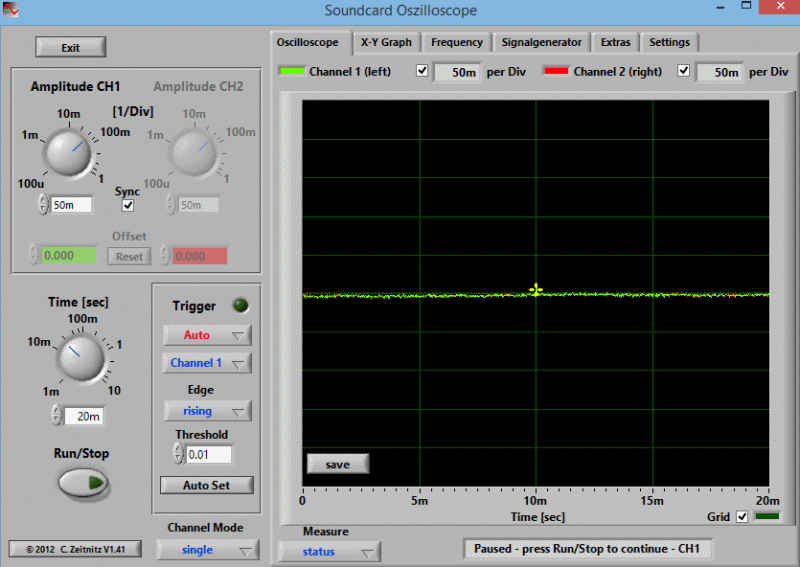
Level 3:
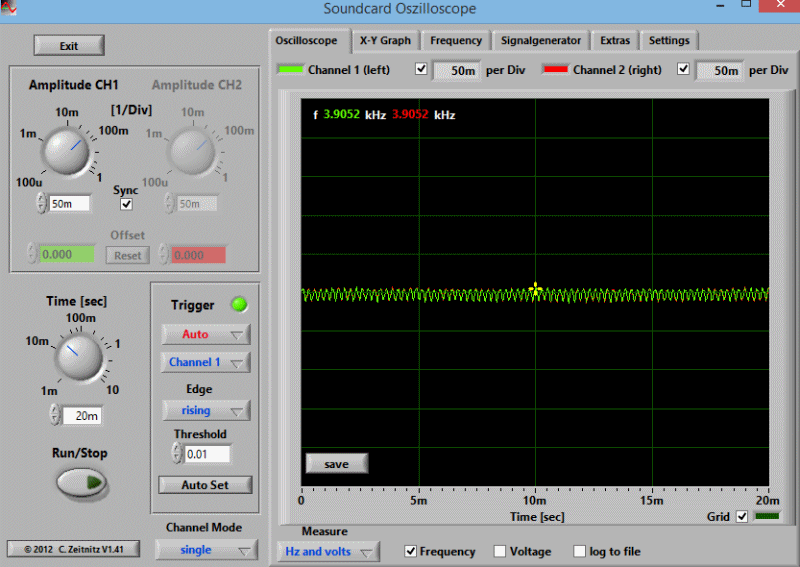
Level 7:
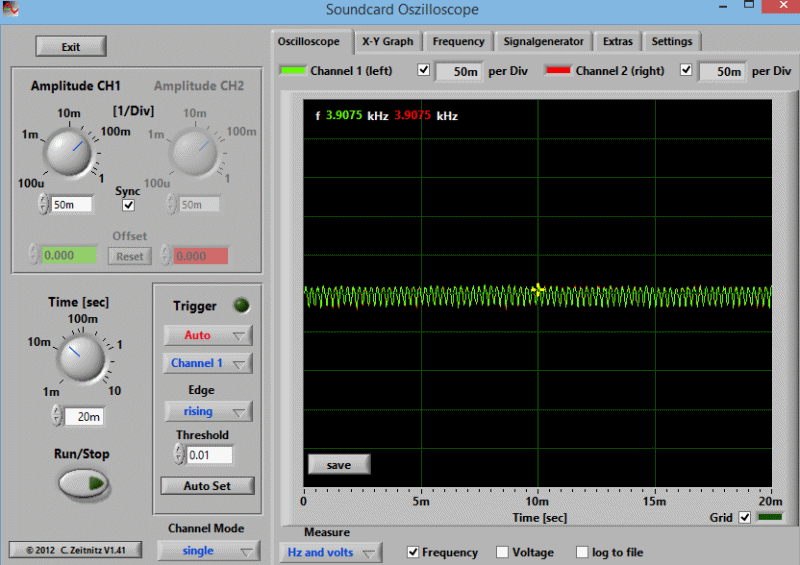
Level 10:
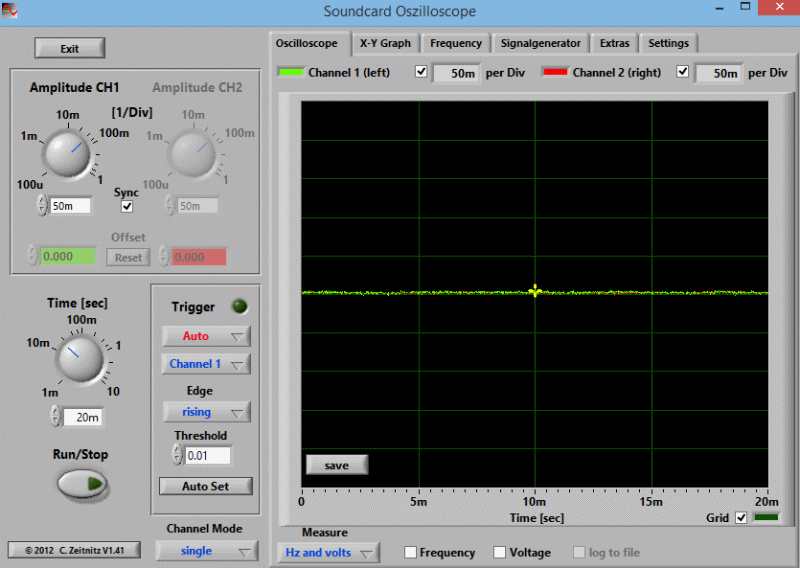
These are not visible in any way – the output is perfectly constant with no hint of flickering. But consistent with my standard review methodology, I report on anything that I can detect.
The P36 has more flashing modes than typical in most lights (accessed sequentially from the rotary dial when in flashing modes).
Strobe:
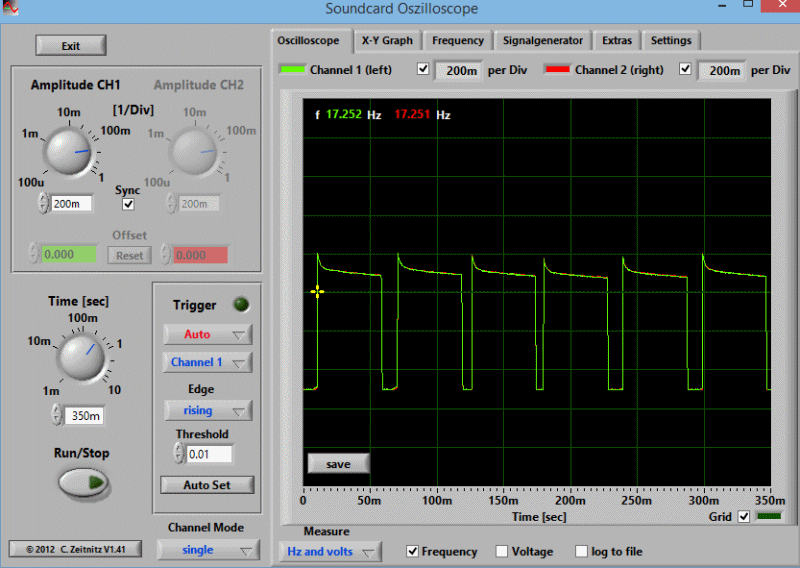
Strobe is a high-frequency strobe, with a slightly variable pulse duration (i.e., frequency varied from ~16.5 to ~17.3 Hz in my sampling). Certainly very distracting. :green:
When turning the dial counter-clockwise, in sequence you get:
Slow Flash:
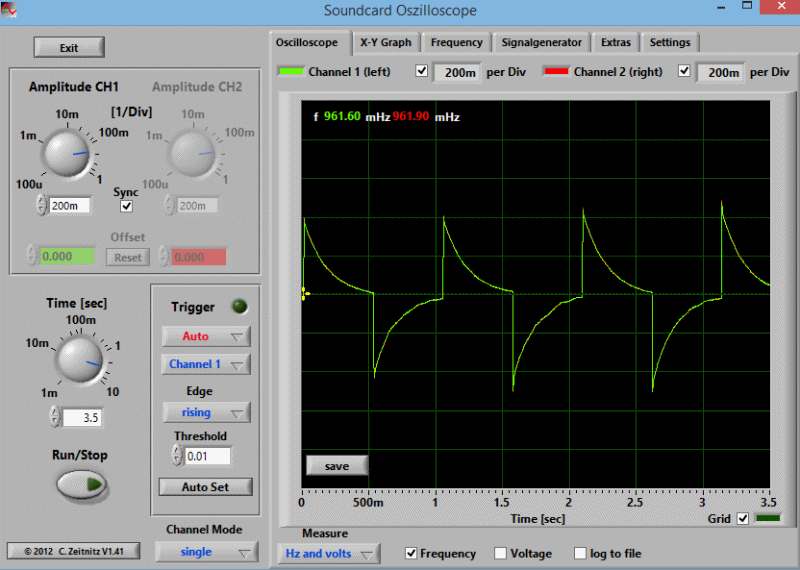
Slow flash mode was a half on/half off flash of 0.96Hz duration, Roughly speaking, each on-pulse was on for half a second, off for half a second. A very good signaling strobe frequency.
Fast Flash:
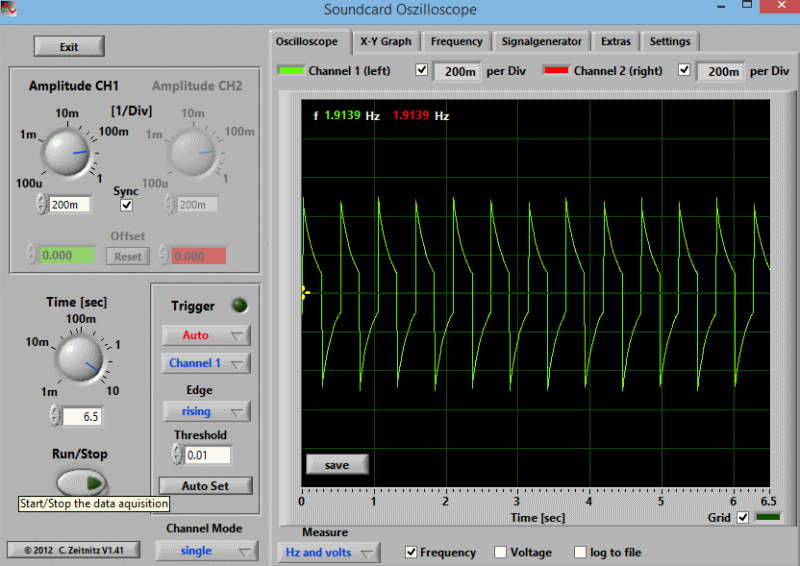
Fast flash mode was a half on/half off flash of 1.9Hz duration (i.e., almost twice per second). So each on-pulse was a quarter of a second long (followed by a quarter second pause). Still a relatively good signaling strobe frequency.
Location Beacon:
Beacon is a quick flash, roughly every 2 seconds.
SOS:
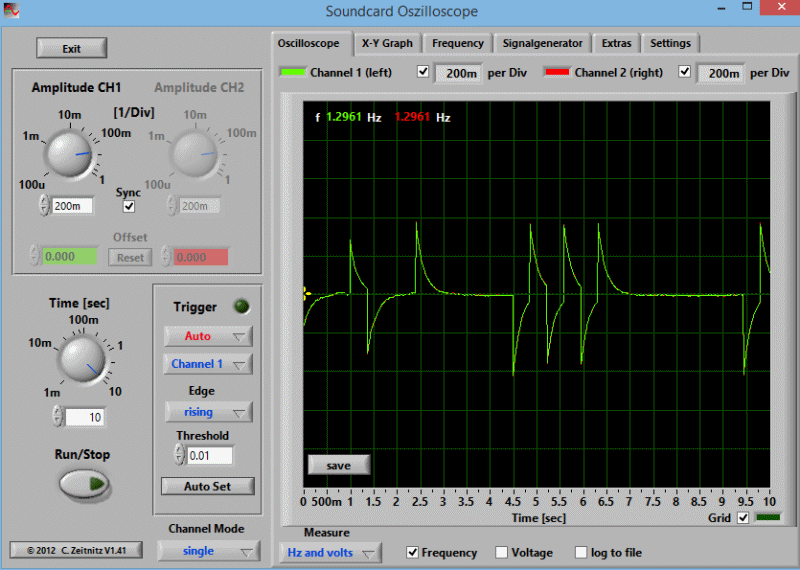
A fairly stand SOS mode.
Standby Drain
Since the P36's rotary dial is always ready to respond to a "shortcut" mode, there is a constant standby drain even when the light is clicked off. This is unusual for a light with a physical clicky switch, but seems to be mandated by the secondary dial switch design. At least there is no sign of PWM with this tailcap/carrier desgin (i.e., PWM often seems necessary to synchronized two independent electronic switch controls in the head and tail).
I measured this persistent standby current as a relatively high 2.55mA. Given that the batteries are in series (i.e. 2s1p), that would mean that 3100mAh 18650 would be fully drained in about 50 days.
As such, I recommend you physically lock out of the light when not in use, by doing >1 full turn of the head.
Beamshots:
For white-wall beamshots below, all lights are on Max output on an AW protected 18650 battery. Lights are about ~0.75 meter from a white wall (with the camera ~1.25 meters back from the wall). Daylight white balance is used on my Canon for all neutral white tints.
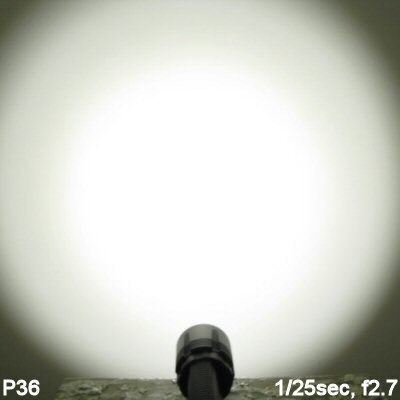
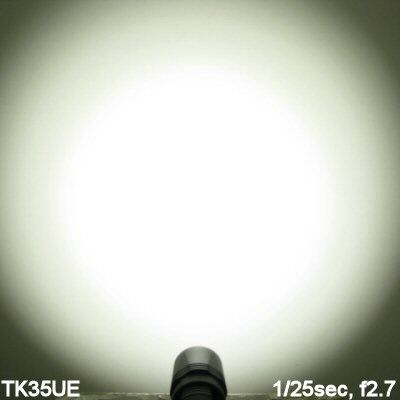
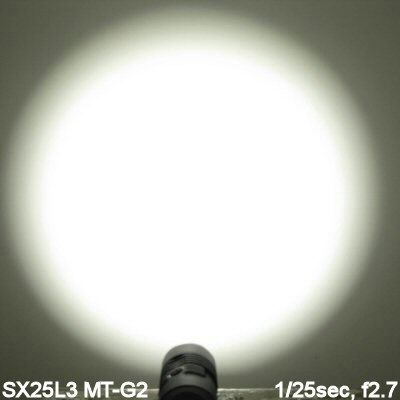
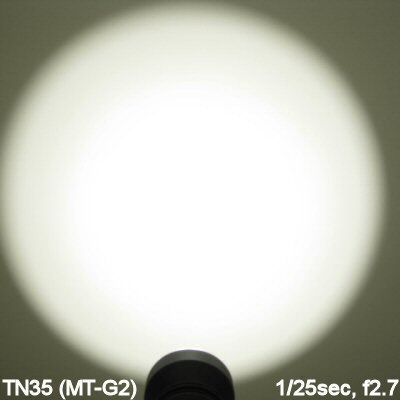
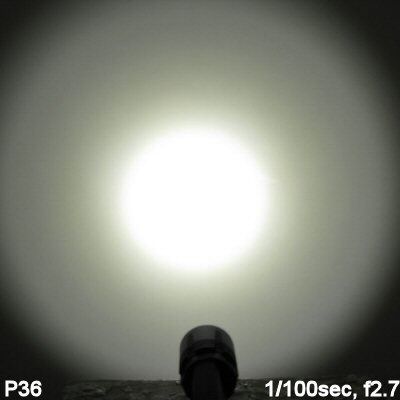
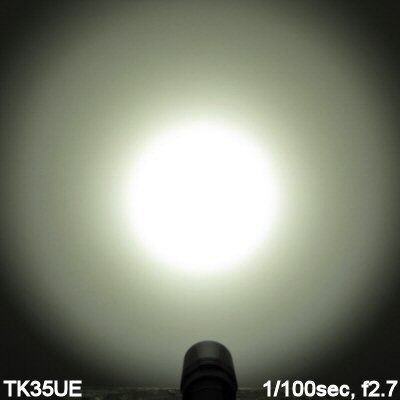
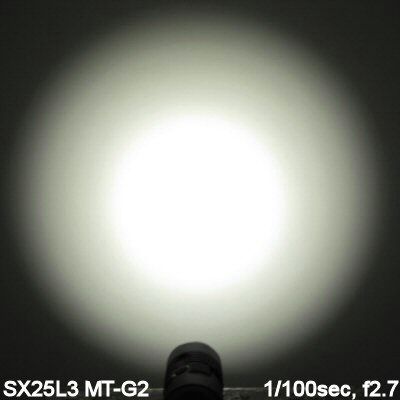
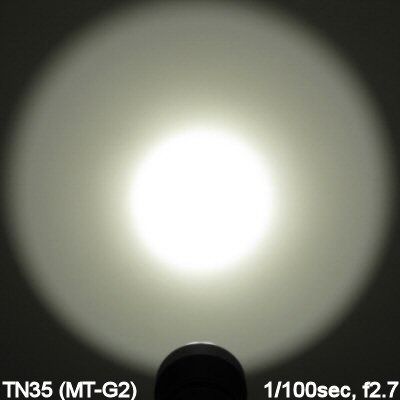
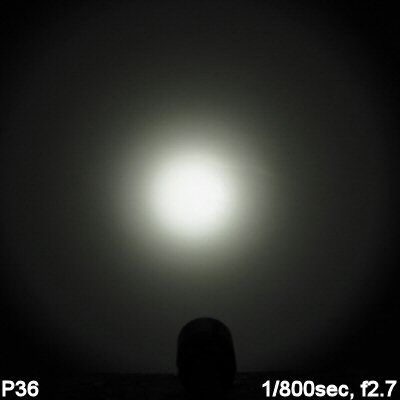
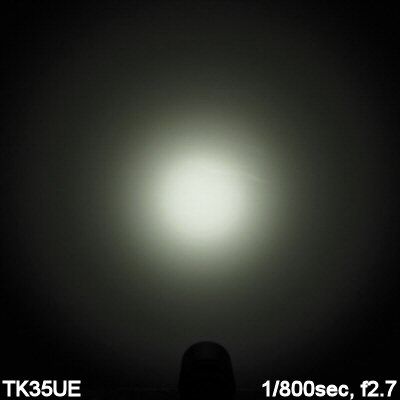
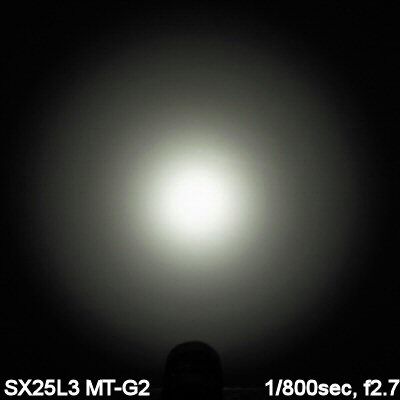
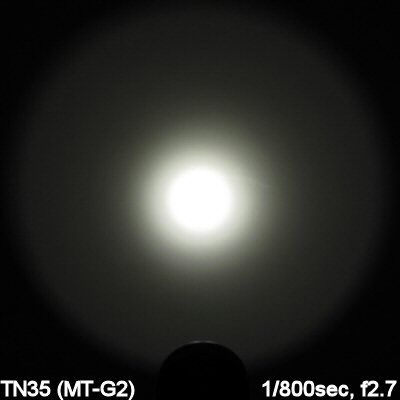
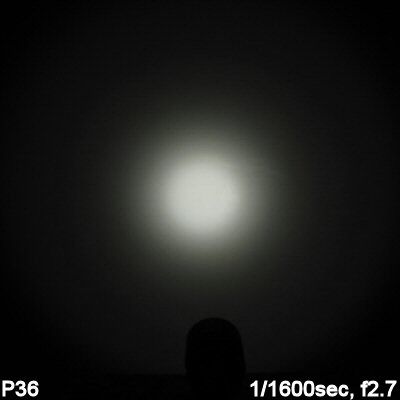
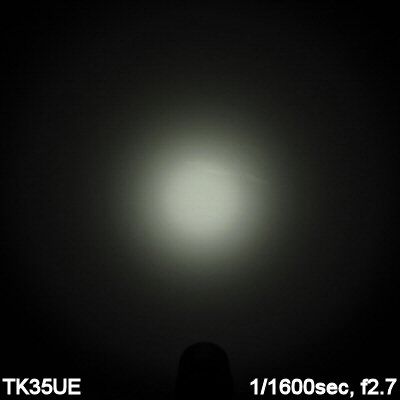
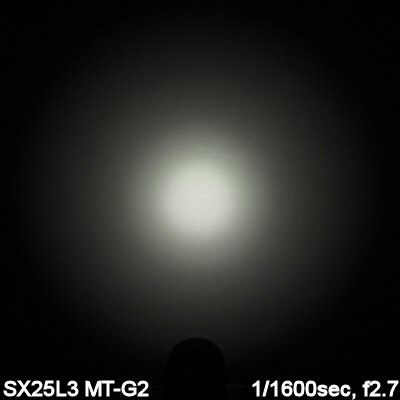
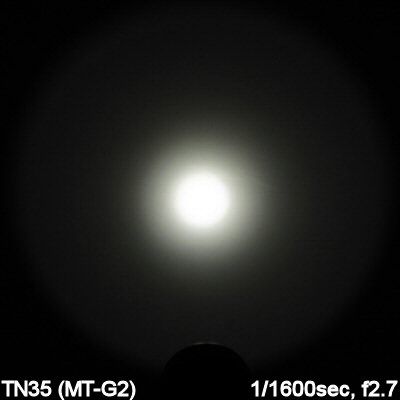
The P36 has a very similar beam pattern to the Fenix TK35UE, with just a bit more throw. It is certainly more of a relatively "throwy" light compared to the Eagletac SX25L3 (although the SX25L3 has more output overall, so peak intensity throw is similar). See my direct beam measures below for more info.
Testing Method:
All my output numbers are relative for my home-made light box setup, as described on my flashlightreviews.ca website. You can directly compare all my relative output values from different reviews - i.e. an output value of "10" in one graph is the same as "10" in another. All runtimes are done under a cooling fan, except for any extended run Lo/Min modes (i.e. >12 hours) which are done without cooling.
I have devised a method for converting my lightbox relative output values (ROV) to estimated Lumens. See my How to convert Selfbuilt's Lightbox values to Lumens thread for more info.
Throw/Output Summary Chart:
My summary tables are reported in a manner consistent with the ANSI FL-1 standard for flashlight testing. Please see http://www.flashlightreviews.ca/FL1.htm for a discussion, and a description of all the terms used in these tables. Effective July 2012, I have updated all my Peak Intensity/Beam Distance measures with a NIST-certified Extech EA31 lightmeter (orange highlights).
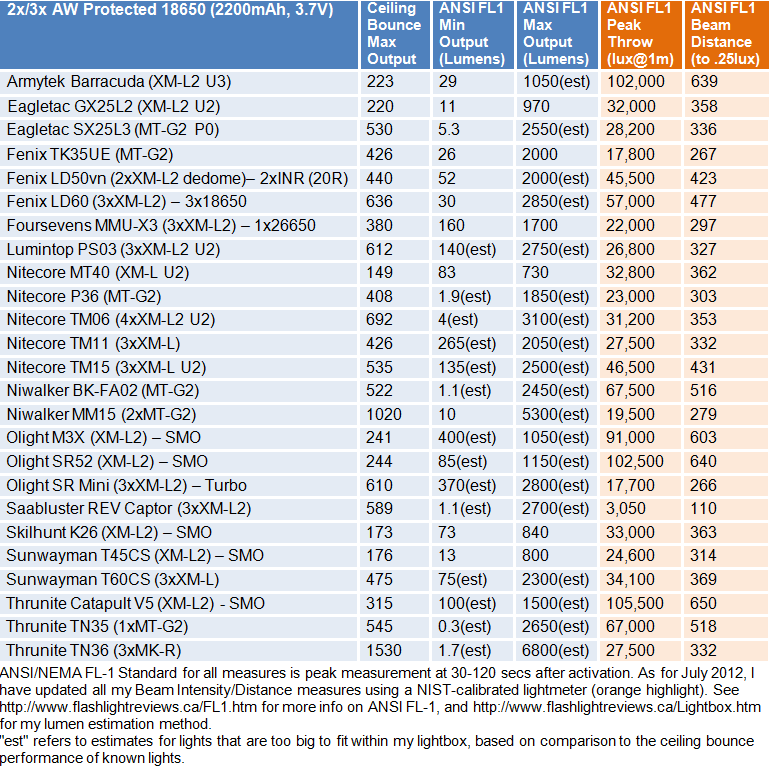
These results are certainly consistent with what you see in the beamshots, for the various MT-G2 equipped lights.
Let's see how all 10 levels compare to the official specs, on 2x18650 in my lightbox:
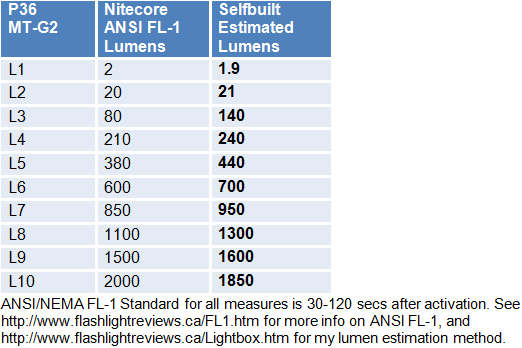
I get very good concordance between my estimated lumens and Nitecore's published specs. There is certainly a good range of output levels here (although there is not much of a visual difference between the higher ones).
Output/Runtime Graphs:
All runtimes are done under a cooling fan. 18650 runtimes done using protected batteries based on the Panasonic NCR18650A core.
Let's start with a comparison of the main levels (down to L4).
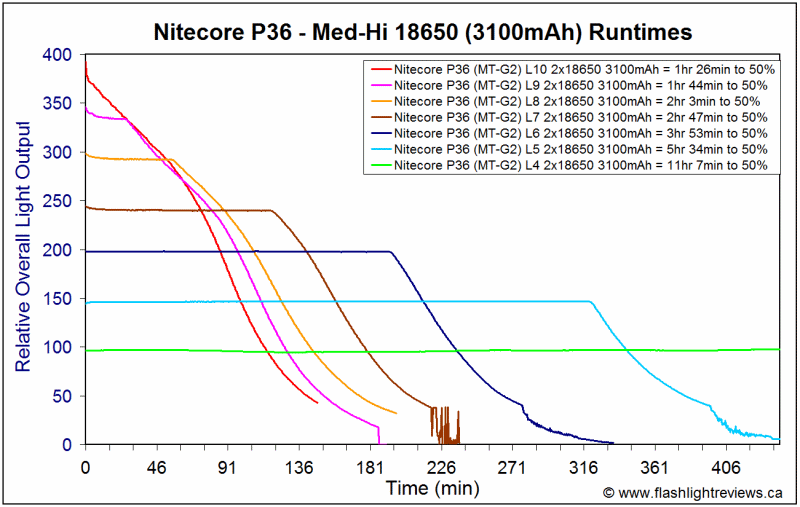
There is relatively little difference in runtimes between L8, L9 and L10. Basically, you just get a short regulated period on L8 and L9, and then the light drops to direct-drive at the same point as the L10 mode. This is not very surprising, since direct-drive is more efficient than flat-regulation. As you go down to the lower modes, the regulated runtime portion continues to increase.
Let's see how the P36 compares to some competing 2x18650 lights:
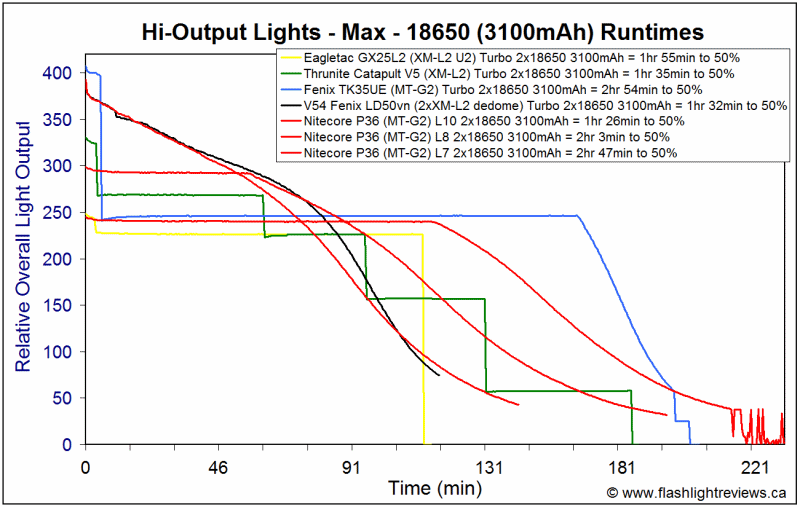
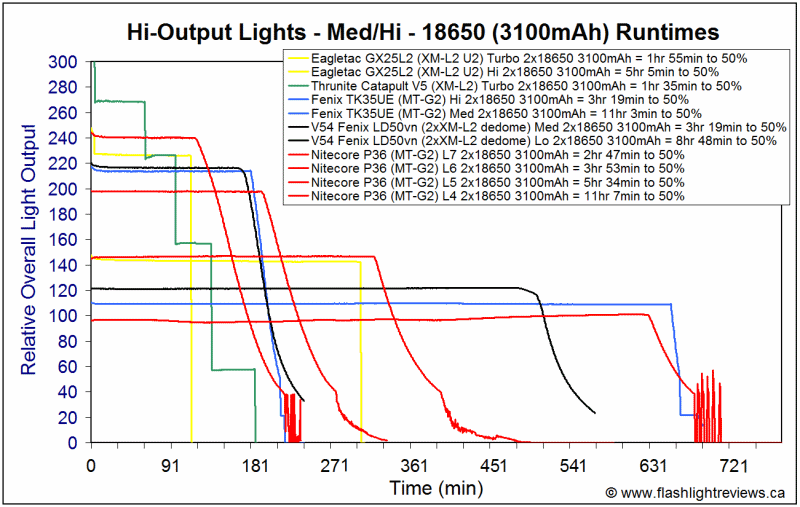
The P36 is at least as efficient as the Thrunite Catapult V5, at all levels. It also approaches the overall efficiency of the Fenix TK35UE (although that light does still maintain a slight advantage, as is common for Fenix's circuits).
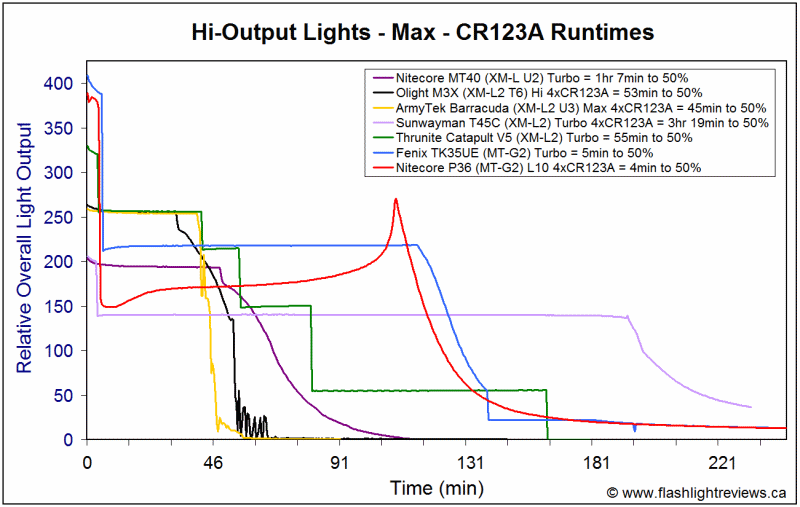
The CR123A runtime above requires a bit of explaining. I used my standard Rayovac (made-in-the-USA) CR123As for this test. Judging from the pattern, it looks like the built-in PTC feature kicked in to limit output and heat. I've seen this on a number of heavily driven multi-cell lights. Please see my CR123A battery round-up thread for a discussion.
Potential Issues
Standby drain is higher than typical in this light, at ~2.5mA. I presume this has to do with the innovative rotary dial, which allows you pre-select certain outputs from off. Given this drain, I recommend you lock the light out when not in use. Note that this requires a full revolution turn of the head on my sample.
The P36 uses a plastic battery carrier, and one which has a very strong acrid smell in my case (likely due to out-gassing of plasticizers). Given the sealed body, this means these odors can concentrate. Not a safety concern, but it does make battery changes a smelly affair.
The light is not as "grippy" as some, although is reasonable. It may take a bit of time to get use to the feel and use of the control dial by your thumb or index finger, depending on how you plan to hold the light.
There is no apparent step-down from the max levels. As such, primary CR123As are not recommended for these levels (i.e., the P36 generates a fair amount of heat). As you can see on my max mode run, the PTC safety circuits engaged on my made-in-the-USA cells fairly quickly.
There is a wider range than typical of output levels, although there isn't much visual (or runtime difference) between the highest ones.
Preliminary Observations
The P36 builds on a traditional design (i.e., the side-by-size 2x18650 style), and incorporates the popular MT-G2 emitter (which produces a broad hotspot, in neutral white tint). But what is particularly distinctive here is the tail rotary dial control mechanism, in addition to an on/off clicky switch.
Overall build quality is good, at least at the same level as the similarly-equipped Fenix TK35UE. The one nagging issue for me is the smell emanating from the battery carrier on the P36, but that's a minor inconvenience (and experienced only when changing batteries). Hand feel is good, as are the ergonomics overall. It may take a bit of time to get used to controlling the dial with a thumb or forefinger (depending on how you hold it), but this is still reasonable.
I've not seen this particular interface before. The only real issue for me is that it is not intuitive that counter-clockwise raises the output, and clockwise lowers it. Personally, I found myself repeatedly ramping down output when I meant to increase it. :shrug: Maybe it is just my thumb, but it seems to intuitively feel that clockwise should be forward, and counter-clockwise backward.
I did like that you could dial past max or min (with no effect), but with an immediate output change the other way if you reverse the direction. This is intuitive, and worked well in practice (i.e., just spin the wheel if you want to quickly ramp to max or min). The idea of including "shortcuts" to min and max from off is also a good one (in addition to the default mode memory) – again, as long as you remember the direction. Keep in mind that there is a standby drain from off as a result of this feature, and that it is higher than typical.
In terms of output modes, the P36 has a wider range than most lights – there should be something for everyone here.
Output/runtime efficiency was very good, with a mix of flat-regulated and direct-drive at the higher levels. Overall efficiency is certainly in keeping with other current-controlled MT-G2 lights in this class (including the Thrunite Catapult V5 and Fenix TK35UE). One comment – there is no step-down on max, so I recommend you manually dial down the output if you find the light is getting hot. I similarly don't recommend use of CR123A for sustained near-max use (see runtimes above).
Beam pattern is good, with the typical large hotspot common to all MT-G2 lights. Note the light is not as throwy as ones with smaller emitters – the P36 falls into the same camp as the Fenix TK35UE and Eagletac SX25L3, although it is perhaps the most "throwy" of the three. I find the P36 to be a reasonable balance for a general purpose light.
It's nice to see Nitecore add something new to the 2x18650 class, with this distinctive rotary dial switch. As long as you can remember the direction for forward and back, you have a surprisingly effective and versatile interface at your command. And the MT-G2 emitter with deep reflector gives you a relatively balanced beam, in a pleasing neutral white. Certainly a strong candidate to consider in this form factor. :wave:
-----
P36 provided by Nitecore for review.
Last edited:


